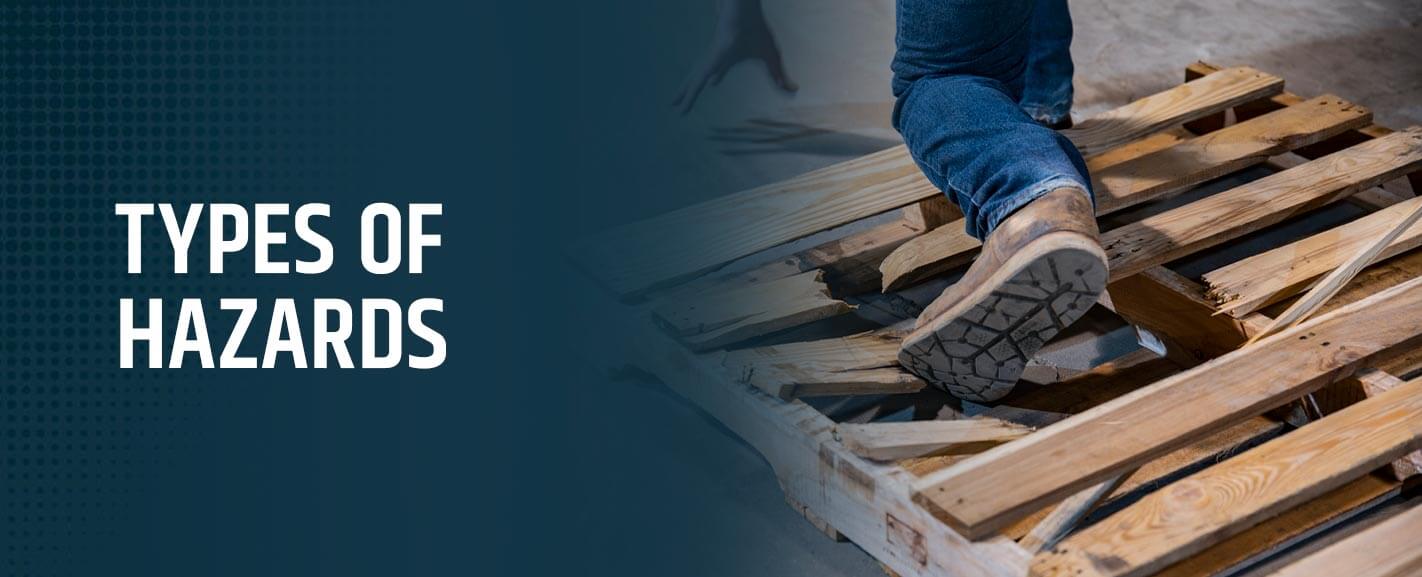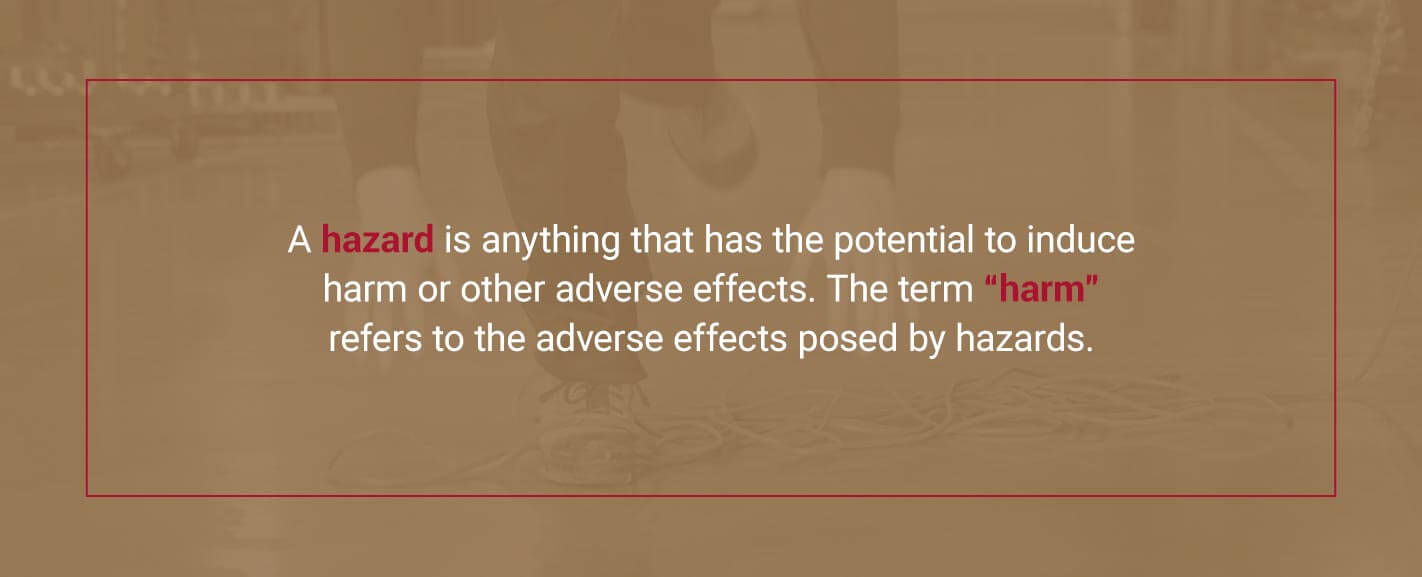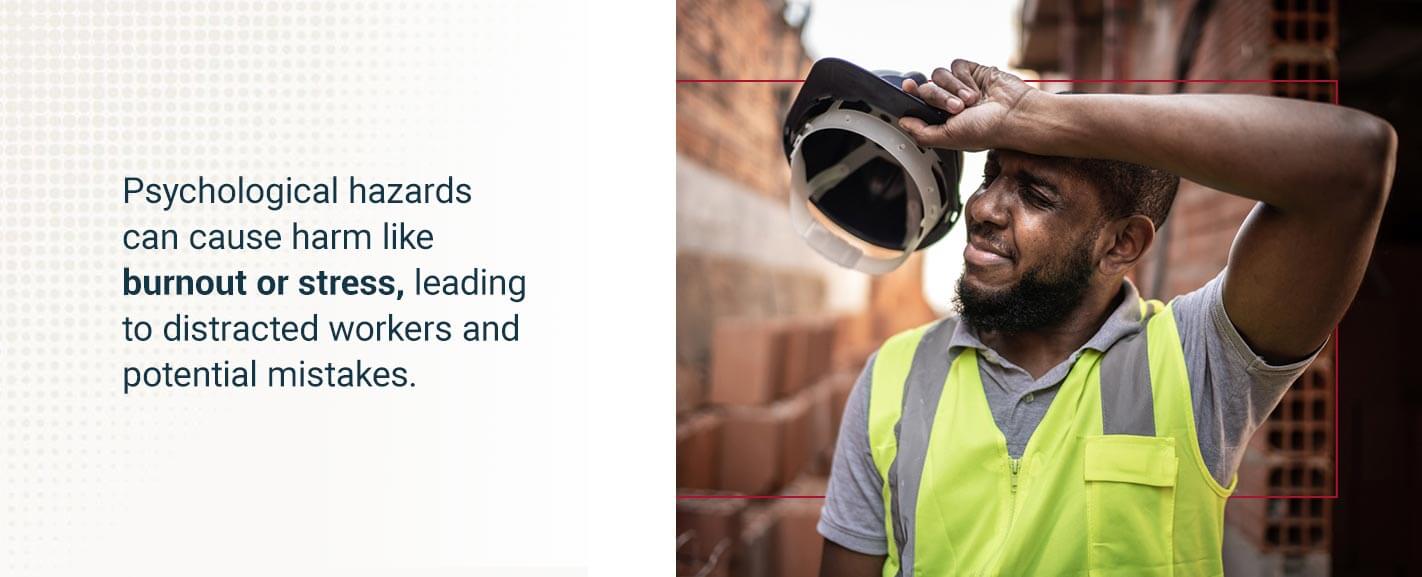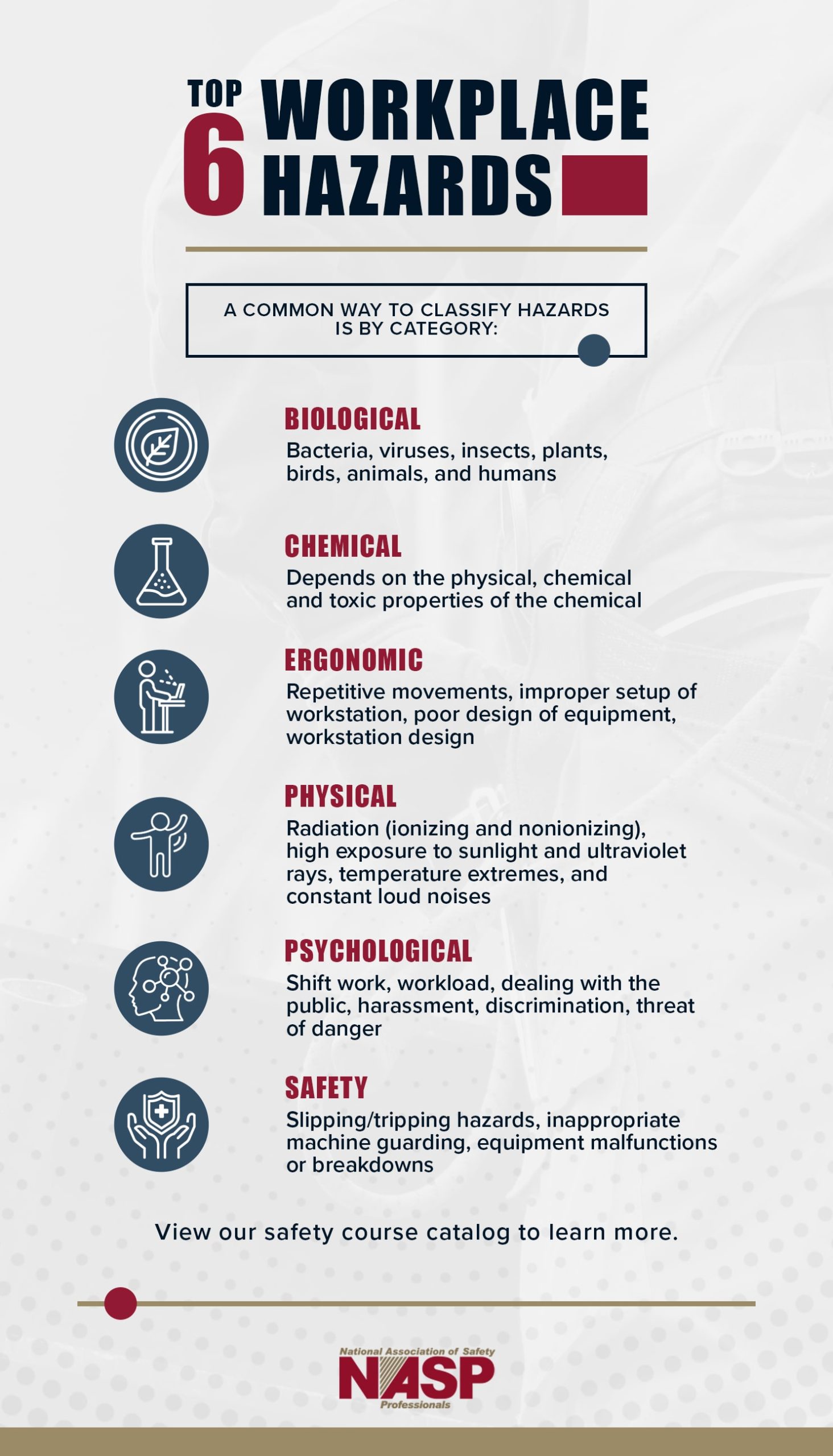
Every workplace has hazards, and it’s helpful to know which pose the greatest risk of harm for your workers and yourself. Being able to identify workplace hazards helps you better prepare to eliminate, control and even prevent injuries, accidents, downtime and property damage.
Learn how to minimize hazards so your workplace can be safer for you, your team and anyone else who enters it. As you’ll see, one of the best ways to eliminate workplace hazards is through education and proper training, which can help you further your career as a safety professional while creating an efficient, low-risk job site.
What Is a Workplace Hazard?
It’s easy to use the words “hazard” and “risk” interchangeably. But the truth is that the term “hazard” is a bit more nuanced than a simple risk. There are many definitions for hazard, but consider the concept as it relates to workplace health and safety. With this context in mind, we can say that a hazard is any source of potential harm, damage or adverse health effects on someone or something within the workplace. Risk, on the other hand, is just the possibility that an accident can happen. Risk can be defined as the probability of the hazard occurring as well as the severity that hazard may present.
Every workplace is different. For this reason, workplace hazards differ from industry to industry, warehouse to warehouse and job site to job site.

Workplace Harm vs. Workplace Hazard
It’s important to separate the word “harm” from “hazard,” in both the context of the workplace as well as in general. It can be easy to lump these two words together, but in fact, they are separate concepts with distinct definitions. Knowing the difference between a hazard versus harm will help you better prepare to prevent workplace hazards and reduce the risk of harm to yourself and your workers.
A hazard is anything that has the potential to induce harm or other adverse effects. People can experience health effects, while organizations can experience property or equipment loss. Hazards can also present the potential for harm to the environment.
The term “harm” refers to the adverse effects posed by hazards. Picture a hazardous material leaking out of a container on a pallet in a warehouse. The leaking material is a hazard, but harm only occurs when the material has caused negative health effects to a human, property or equipment damage or damage to the environment.
In short, a hazard is the potential source of harm to a worker, property or the environment. Harm is the actual negative outcome, such as an injury or damage to the affected person, place or thing.
View NASP’s Certified Safety Manager Course
Jump to:
Biological Hazards | Chemical Hazards | Ergonomics Hazards | Physical Hazards | Psychological Hazards | Safety Hazards |
Types of Hazards
Here are the six main types of workplace hazards:
- Biological: Bacteria, insects, viruses, plants, animals, birds, humans, etc.
- Chemical: The toxic, chemical and physical properties of the material
- Ergonomic: Posture, workflow, workstation design, poor equipment design, improper workstation setup, heavy or awkward lifting, repetitive movements, etc.
- Physical: Loud noises, extreme pressures, magnetic fields, radiation, fire, poor lighting, unsafe machinery, misused machinery, obstructions in walkways, slippery floors, etc.
- Psychological: Violence, stress, constant low-level noise, threats of danger, discrimination, harassment, public relations, intense workloads, shift work, etc.
- Safety: Equipment malfunctions, equipment breakdowns, inappropriate machine guarding, tripping and slipping hazards, etc.
Let’s take a look at these hazards in detail:
Biological Hazards
Research facilities and hospitals, among other industries, produce wastes that may contain disease-causing organisms, known as biological hazards. These pose a risk of infection for site personnel, and they could disperse into the environment via wind and water, leading to rapid spreading and more contamination.
There are many biological hazards present at hazardous waste sites. These include animals, insects, indigenous pathogens and poisonous plants. All personnel must wear respiratory equipment and protective clothing to have a better chance of avoiding exposure. Workers should wash any exposed or potentially compromised equipment and body parts to help resist infection and spreading. This is referred to as decontamination.
Here are some potential biological hazards workers can be exposed to:
- Fungi
- Mold
- Blood and other bodily fluids
- Plants
- Viruses and bacteria
- Bird and animal droppings
- Insect bites
Chemical Hazards
Workers experience chemical hazards when they face exposure to a chemical preparation in the workplace. This chemical may take the form of a gas, liquid or solid. While some materials are safer than others, all pose a risk to workers. This concern is especially true when you consider that different people have different sensitivities to chemicals. This is even true of common chemicals that can cause breathing issues, skin irritation and illness.
Beware of the following chemical hazards:
- Liquids like solvents, acids, paints and cleaning products, especially if they are in unlabeled containers
- Vapors and fumes that come from exposure to solvents or welding
- Gases including helium, carbon monoxide, hydrogen sulfide, ammonia, propane and acetylene
- Flammable materials including explosive chemicals, solvents and gasoline
- Pesticides
Ergonomic Hazards
Ergonomic hazards happen when working conditions, body positions and the type of work being performed put a strain on the body. Ergonomic hazards can be difficult to identify since the strain exerted on the body often takes time to reveal itself. Workers may experience light symptoms like sore muscles after experiencing harm from ergonomic hazards. But over time, even these light ailments can lead to severe long-term illnesses.
Here are some examples of ergonomic hazards:
- Frequent lifting
- Improperly adjusted chairs and workstations
- Bad posture
- Awkward movements
- Repetition of a certain motor skill
- Vibrations
- Repeated use of force, potentially beyond one’s comfort limits

Physical Hazards
Workers face physical factors in the environment that can cause harm to the body, even without physically contacting the hazard.
Physical hazards include the following:
- Radiation, both ionizing and nonionizing (EMFs, radio waves, microwaves, etc.)
- High exposure to sunlight and ultraviolet (UV) rays
- Cold and hot temperature extremes
- Incessant loud noise levels
Psychological Hazards
Psychological hazards can cause harm like burnout or stress, leading to distracted workers and potential mistakes. To combat the causes of psychological harm, managers and supervisors can implement a positive workplace culture that values safety, equality and sustainable working practices.
Examples of psychological hazards in the workplace include:
- Lack of job training
- Unrealistic production goals
Threats or intimation by management or coworkers - Poor safety culture
- Required overtime hours
- Unclear policies
Safety Hazards
Safety hazards are the most common type of hazard in the workplace. They refer to unsafe conditions leading to illness, injury and even death.
Here are some common safety hazards:
- Tripping and slipping hazards, including spilled liquid, cords running across the floor and blocked aisles
- Working from any raised work area, including roofs, scaffolding and ladders
- Moving machinery parts and unguarded machinery that a worker can accidentally touch
- Electrical hazards, including improper wiring, missing ground pins and frayed cords
- Confined spaces
- Hazards related to machinery, including boiler safety and the improper use of forklifts
Some hazards put workers at risk of accidents and injury and can also lead to other hazards. For instance, workers can face increased chemical exposure if their protective equipment is damaged. There is also the potential for explosion when mixing chemicals. Be aware of potential safety hazards, and instruct your workers to immediately tell supervisors of any new hazards that arise. That way, your team can take the proper action to address the situation.
How to Prepare for Workplace Hazards
One of the best ways to prepare for workplace hazards is to undergo professional safety training. Taking the necessary training courses helps you identify any risks of hazards before they occur. You’ll also be better able to navigate situations where hazards are present to achieve the best and safest outcomes possible. You’ll then have the knowledge and ability to respond to hazards properly to return the workplace to safe operating conditions.
Getting your online safety training certificate from The National Association of Safety Professionals (NASP) can help you advance your career while helping your workers stay as safe as possible. Browse our online courses to find the right one for you so you can prepare for workplace hazards. Contact us today if you’d like any more information about how we can help you reach your safety goals!





